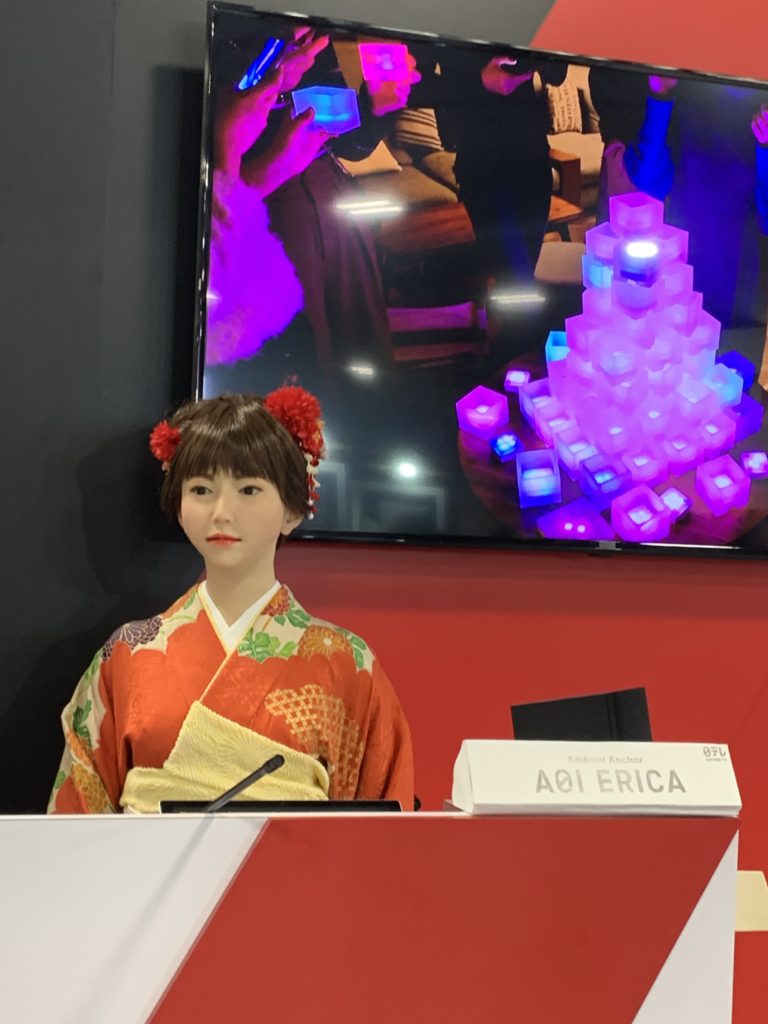Over Coffee® | Stories and Resources from the Intersection of Art and Science | Exploring How to Mak

Another Aspect of ERICA
 ERICA at the Japan section of Eureka Park® during CES® 2020, Las Vegas.
ERICA at the Japan section of Eureka Park® during CES® 2020, Las Vegas. “ERICA (isn’t just a laughing robot),” clarifies researcher Dr. Divesh Lala.
“The laughing is just a small part of the whole.”
Kyoto University researchers first began working with ERICA, or ERATO Intelligent Conversational Android, in 2015. Their goal: to develop her as a social robot who can function in conversational situations.
Currently, that objective includes teaching the robot to laugh–an appropriate laugh, at the right time.
Divesh, who is a JSPS Postdoctoral Research Fellow at Kyoto University, specializes in the area of artificial intelligence. For almost six years, he’s been a researcher on the ERATO Ishiguro Symbiotic Human-Robot Interaction project.
In other words, he’s had the opportunity to work with ERICA, from the very early days.
Using gaze behavior, speech and gesture, Divesh creates engaging conversations with this humanoid robot. He’s published numerous research papers on his work–including “Can a Robot Laugh With You?”, on which he is one of three co-authors.
Divesh talked about the process of programming ERICA to be an engaging and believable conversationalist, explained what’s involved in giving the robot the ability to laugh and offered a preview of what’s next.
On this edition of Over Coffee®we cover:
- How Divesh first became interested in artificial intelligence;
- His recollections from his early days of working with ERICA;
- A speech-recognition issue which is natural to humans but presented researchers with a challenge, in programming the robot;
- A distinction to keep in mind, about ERICA;
- How researchers decided to include laughter in her conversational capabilities;
- Considerations involved in that process;
- How it works, when the robot laughs;
- Divesh’s favorite experience, from this latest aspect of his research work;
- Some possible future applications of ERICA’s conversational capabilities;
- What could be next, for the laughter model;
- Divesh’s recollections of the first time he heard ERICA laugh;
- Where to find additional publications on his research;
- Divesh’s advice for fellow robot enthusiasts, on creating lifelike humanoids.






 Visit Podcast Website
Visit Podcast Website RSS Podcast Feed
RSS Podcast Feed Subscribe
Subscribe
 Add to MyCast
Add to MyCast